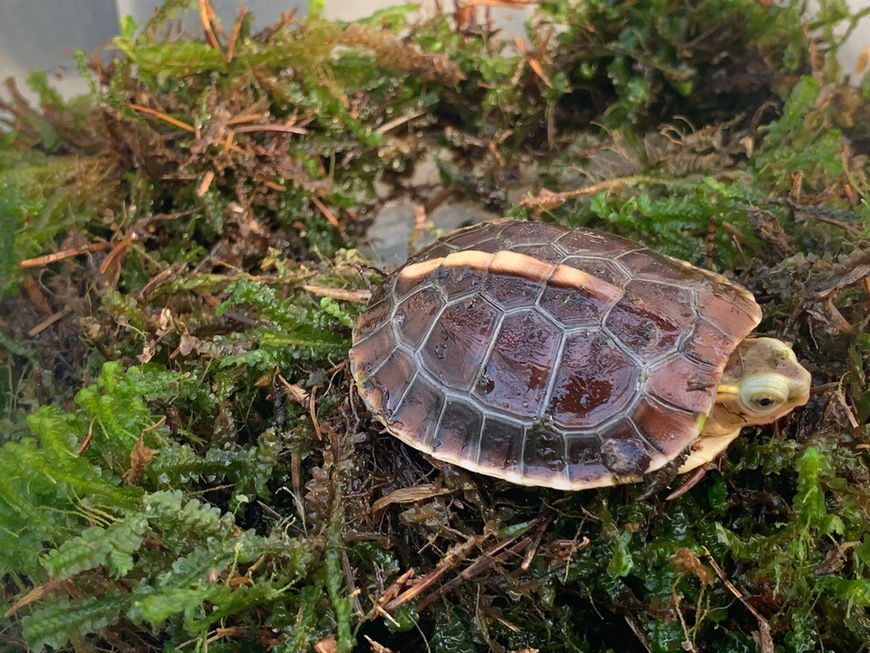top of page

Cuora flavomarginata (Gray 1863)
-
Cuora flavomarginata evelynae (Ernst & Lovich 1990)
-
Cuora flavomarginata flavomarginata
-
Cuora flavomarginata sinensis (Hsü 1930)
The Chinese box turtle was described by John Edward Gray in 1863 based upon one specimen from China (without precise locality) and another from Taiwan. C. flavomarginata is a highly terrestrial member of the genus Cuora and is known to actively hunt diverse prey, including snakes, in its native habitat. Its a medium-sized Cuora species, usually reaching 15-16 cm SCL, but in rare cases can attain 23 cm SCL.
The nominate subspecies is distributed on Taiwan, and several varieties that show some genetic difference (based on preliminary evaluations), are known from the island. Southern Taiwan specimens are larger and flatter while northern specimens are higher-domed and smaller; specimens from the east of the island show strong similarities to C. f. evelynae. This latter subspecies is confined to the small islands of Yonaguni, Iriomote, Kohama and Ishigaki in the Ryukyu Archipelago of Japan, less than 250 km east of Taiwan. C. f. evelynae usually has slight vertebral and costal keels to the carapace, always exhibits orange-brownish blotches on each costal scute, which are variable to absent on Taiwan specimens, and reddish on specimens from mainland populations. The marginal scutes can show black blotches along the bridge, which is not known from other populations. The head color is generally yellowish and the neck greyish. Specimens of C. f. evelynae remain small - they usually do not exceed 16cm SCL - and unsurprisingly are the smallest subspecies. Ernst & Lovich (1990) described C. f. evelynae as a full species, C. evelynae, based on morphological characters. This distinction has not been universally recognized due to the morphological variability of specimens Taiwan.
The third subspecies, C. f. sinensis, originates from the Chinese mainland, occuring in Fujian, Henan, Anhui, Hubei, Zhejiang, Jiangsu, Hunan, Jiangxi and perhaps also in extreme northern Guangxi, Guangdong and in the north of Chongqing and Sichuan (doubtful) Provinces. This broadly outlined subspecies is not recognised by many authors, but is in our opinion the most divergent and variable one and should thus be regarded as valid. Future genetic studies will show if additional significant diversity exists. This subspecies is high-domed, more rounded dorsally, shows clear growth anuli on each scute, has bright orange-reddish head coloration (also on other soft parts of many specimens), which is more faded orange to yellow in the other subspecies. C. f. sinensis also possesses an intense red blotch on each costal scute, "dragon" ridges on each vertebral scute, and the yellow stripe extending along the vertebral scutes is usually fully connected, not so in most other populations. This subspecies generally grows to 15-19 cm SCL.
C. flavomarginata is farmed in considerable numbers in China and also on Taiwan. Most mainland Chinese populations are critically endangered due to habitat destruction and over-harvesting. Taiwanese populations are subject to poaching but currently seem to be in better shape than those on the mainland. The Ryukyu populations are generally considered to be safe, although specimens have turned up in the Chinese trade in recent years.

© Cuora.org
© Cuora.org
bottom of page

























